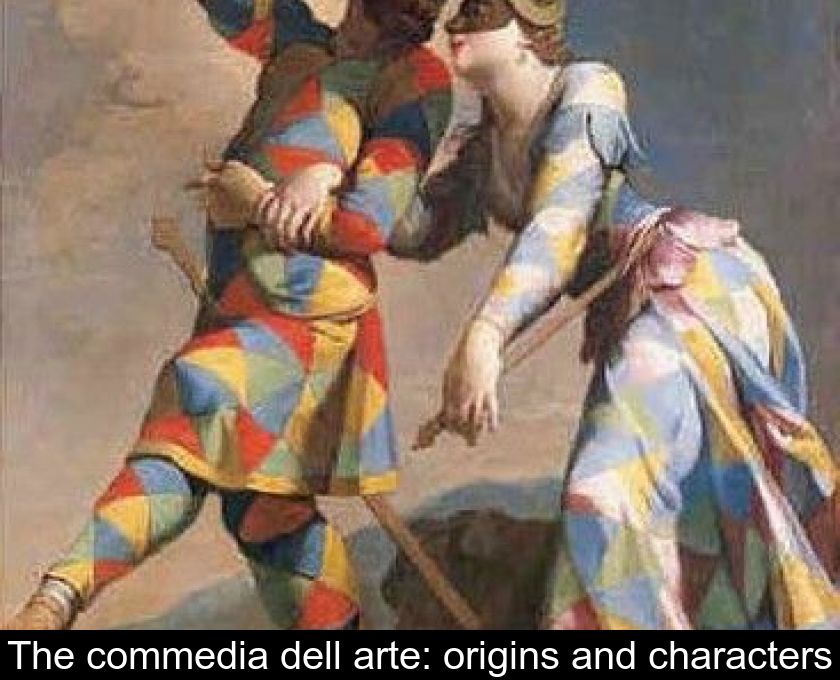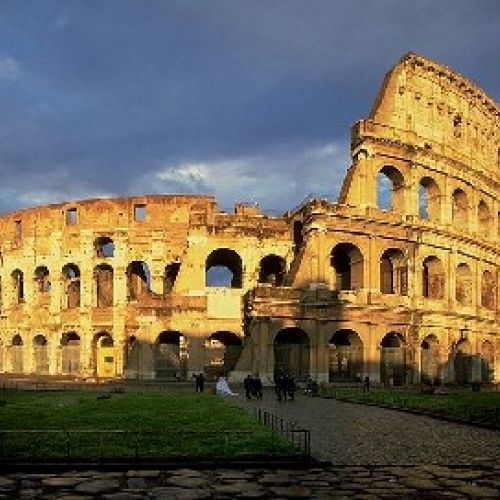The Commedia Dell'arte: Origins And Characters
Popular theatre that appeared in Italy in the 16th century, commedia dell'arte has left us a picturesque gallery of characters. From Pierrot to Colombine, not forgetting Harlequin, these comedy characters can be found today in the Carnival corsos.
What is commedia dell'arte?
The commedia dell'arte is a genre of popular theater that appeared in Italy around 1550. This theatrical genre is characterized by stereotypical characters and slapstick situations. With the exception of love roles, all actors wear masks.
The Italian expression 'commedia dell'arte' (which has been taken up in French) literally means 'theatre performed by people of art', that is, professional actors.
This theatrical form inspired the greatest French playwrights, such as Molière and Marivaux.
What are the origins of commedia dell'arte?
Commedia dell'arte is attested in Italy around 1550, but its origins are said to go back to the farces of the Middle Ages. This theatrical genre is said to have originated with the first prose comedy by Angelo Beolco, known as Ruzzante.
This form of popular comedy was an entertainment for the general public. Troupes composed of acrobats, minstrels and comedians improvised, from a simple plot, a comedy mixed with singing, dancing and acrobatics.
The popularity of commedia dell'arte, in Italy and abroad, was extraordinary. Henri III had a troupe come to France in 1576. In the 17th century, the governments of Spain and France sought to censor and regulate this theatrical form.
In the 18th century, Carlo Goldoni breathed new life into commedia dell'arte by Writing in prose, gradually eliminating masks, and giving the characters an ever more marked individuality. He moved this theatrical genre towards character comedy, while his 'rival' Carlo Gozzi remained in the tradition.
What are the characters in the commedia dell'arte?
Commedia dell'arte relies on clearly recognizable characters, thanks to their costumes, masks, and stereotypical characters.
There are four main types:
- Pantalone (Pantalone in Italian) is a citizen of Venice; dressed in a Long-pants, he embodies the stingy, gullible, libertine, or meticulous old man. He alternately plays the role of father, husband, widower, or even old boy.
- the Doctor (Il Dottore) is, along with Pantalon and Cassandra, one of the old men in the cast. He traditionally comes from Bologna. He is often a long-time friend of Pantalon. This supposedly learned character makes a fool of himself when he talks about science. He is a satire of the pedantic scholars of the 17th century.
- the Capitan is a blustering, boastful, and conceited soldier. Often of Spanish origin, he wears a uniform (a multi-colored striped suit with gold buttons, a feathered hat and a large sword)
- the zannis or valets, deceitful or foolish, schemers or cowards
Among the valets are the characters of:
- Arlequin (Arlecchino) and his costume made of multicolored rhombuses; he is known for his buffoonery, gullibility and laziness. He is sometimes the lover of Columbine and the rival of Pierrot.
- Brighella: a more cunning valet than Harlequin; always dressed in green and white with a black or olive mask over his face, he carries a purse and a dagger on his belt.
- Pierrot (Pedrolino) is candid and playful. His clothing is white and he does not wear a mask because his face is flushed.
- Polichinelle (Pulcinella) is a servant who is sometimes silly or clever brave or poltroon. His costume is a white shirt, cinched into a belt. He wears a long hat and a black mask with a hooked nose and wrinkles.
- Scaramouche (Scaramuccia) is boastful, boastful and fearful. Dressed all in black, in the Spanish fashion, he carries a long rapier and presents himself as a prince or duke, even though he is a knave.
- Colombina (Colombina) is a humble servant or bold maid with a quick wit. She is by turns the daughter, wife or mistress of Cassandra, Pantalon, Pierrot's companion or Harlequin's lover.
There are also lovers in commedia dell'arte around whom the action is built: Lelio, the young leading man, and Isabella.
From these characters, each troupe could perform hundreds of different plots.
Commedia dell'arte companies employed professional actresses and did not have men perform the female roles.











